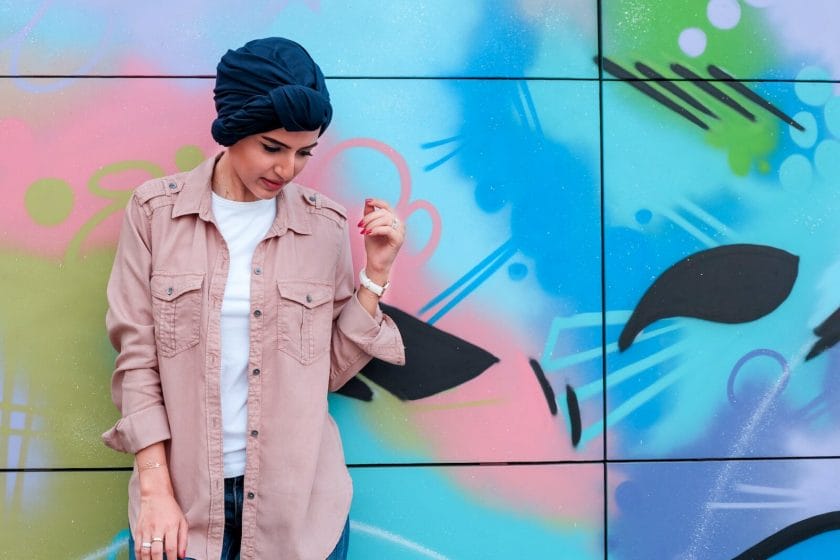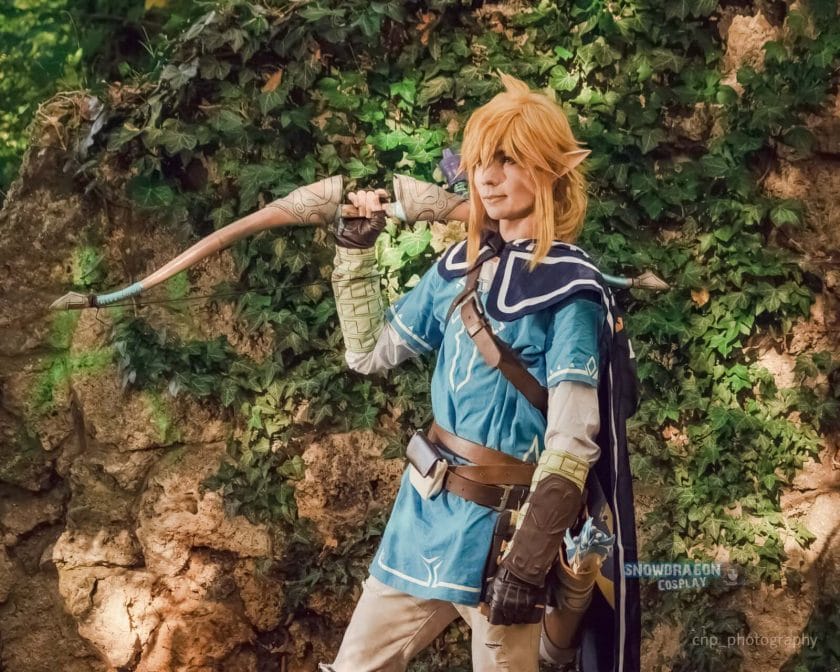[publishpress_authors_box layout="ppma_boxes_840322"]

Key Elements of a Memorable Walk Act for a German Audience
A memorable walk act for a German audience requires careful consideration of various elements to ensure it captures their attention and leaves a lasting impression. One key element is the incorporation of humor, as Germans appreciate wit and cleverness in performances. Including comedic moments or unexpected surprises can help engage the audience and make the walk act more memorable.
Another important element is the use of interactive elements that involve the audience. Germans enjoy being part of the performance, so incorporating opportunities for them to participate or interact with the performers can enhance their experience. This could be through simple gestures like high-fives or more elaborate activities like inviting volunteers on stage.
Furthermore, incorporating cultural references specific to Germany can also make a walk act more memorable. This could include references to German history, traditions, or famous figures. By tapping into their cultural identity, you can create a stronger connection with the audience and leave a lasting impression.
Incorporating Humor
- Create comedic moments or unexpected surprises
- Use wit and cleverness in dialogue or actions
- Engage in playful interactions with the audience
Interactive Elements
- Encourage audience participation through gestures or activities
- Invite volunteers on stage for interactive segments
- Create opportunities for audience members to be part of the performance
Cultural References
- Incorporate German history, traditions, or famous figures into the performance
- Create connections with the audience’s cultural identity
- Show appreciation for German culture through subtle nods or references
Enhancing Performance with Costume Choreography in a Walk Act
Understanding the Role of Costume Choreography
Costume choreography plays a crucial role in enhancing the overall performance of a walk act. It involves carefully planning and coordinating the movements and interactions of performers with their costumes, creating visually stunning and synchronized sequences. This subheading will explore the various elements involved in costume choreography and how they contribute to the overall impact of a walk act.
Incorporating Dance and Movement Techniques
One aspect of costume choreography is incorporating dance and movement techniques into the performance. This can include synchronized group movements, fluid transitions, and dynamic poses that highlight the unique features of each costume. By integrating these elements, performers can captivate the audience with their skillful execution and create a visually appealing spectacle.
List:
– Synchronized group movements
– Fluid transitions between poses
– Dynamic poses highlighting costume features
Utilizing Props and Accessories
Another aspect to consider in costume choreography is the use of props and accessories. These additional elements can enhance the storytelling aspect of a walk act, adding depth to characters or scenes. Props such as umbrellas, fans, or flags can be incorporated into choreographed sequences to create visually striking moments that engage the audience’s attention.
List:
– Selecting props that align with the theme or storyline
– Integrating prop usage seamlessly into choreographed sequences
– Ensuring props are safe for performers to handle during movement
Overall, effective costume choreography enhances both the visual appeal and storytelling capabilities of a walk act. By incorporating dance and movement techniques while utilizing props and accessories strategically, performers can create captivating performances that leave a lasting impression on their German audience.
(Note: The remaining subheadings will follow a similar format with relevant information specific to each topic.)
Cultural Factors to Consider in Crafting a Walk Act for a German Audience
Historical Context
When crafting a walk act for a German audience, it is important to consider the historical context of the country. Germany has a rich cultural heritage that spans centuries, including the medieval period, the Renaissance, and various political and social movements. Incorporating elements from these different eras can add depth and authenticity to the performance.
Regional Differences
Germany is known for its diverse regions, each with its own unique traditions and customs. When planning a walk act, it is crucial to research and understand the specific region where the performance will take place. This includes considering regional dialects, traditional costumes, and local folklore. By incorporating these regional elements into the act, performers can create a stronger connection with the audience.
Social Etiquette
Germans have their own set of social norms and etiquette that should be taken into account when crafting a walk act. For example, punctuality is highly valued in German culture, so ensuring that the performance starts on time is essential. Additionally, Germans tend to appreciate directness and honesty in communication, so avoiding overly exaggerated or ambiguous gestures can help establish a genuine connection with the audience.
Inclusion of German Language
In order to further engage a German audience, incorporating elements of the German language into the walk act can be highly effective. Whether it’s using common phrases or incorporating well-known quotes from famous German figures, this linguistic inclusion can create a sense of familiarity and relatability among spectators.
Overall, by considering these cultural factors when crafting a walk act for a German audience, performers can ensure that their performance resonates deeply with spectators and creates an immersive experience.
Creating Visually Appealing and Culturally Relevant Costumes for a German Audience
Understanding German Aesthetics and Traditional Costume Elements
To create visually appealing costumes for a German audience, it is crucial to understand the aesthetics and traditional elements that resonate with them. Researching traditional German clothing such as dirndls and lederhosen can provide valuable insights into the colors, patterns, and materials that are culturally significant. Incorporating these elements into the costume design ensures that it will be visually appealing and relevant to the German audience.
Collaborating with Local Designers and Artisans
To ensure authenticity in costume design, collaborating with local designers and artisans can be highly beneficial. Working closely with experts who have a deep understanding of German culture and fashion can help in incorporating intricate details that make the costumes truly authentic. Local artisans can also provide guidance on using traditional techniques or materials that add an extra layer of cultural relevance to the costumes.
Utilizing Symbolism and Iconography
In designing costumes for a German audience, incorporating symbolism and iconography can enhance their cultural relevance. Symbols such as oak leaves, edelweiss flowers, or regional emblems can be incorporated into the costumes to evoke a sense of pride in German heritage. Additionally, using colors associated with specific regions or events can further enhance the visual appeal of the costumes while resonating with the audience’s cultural identity.
Incorporating Sustainable Practices
In today’s world, sustainability is an important consideration in all aspects of design. When creating costumes for a German audience, incorporating sustainable practices not only aligns with their values but also adds an extra layer of appreciation for the craftsmanship involved. Using eco-friendly materials or repurposing existing garments can contribute to creating visually appealing costumes while minimizing environmental impact.
Incorporating Traditional German Costumes and Themes into a Walk Act
Researching Regional Variations in Traditional Costumes
Germany is known for its diverse regional traditions, each with its own unique costumes and themes. To incorporate traditional German costumes and themes into a walk act, it is essential to research the specific regional variations. Understanding the differences in styles, colors, and accessories can help in creating an authentic representation of the region being portrayed.
Adapting Traditional Costumes for Performance
Traditional German costumes are often designed for everyday wear or special occasions rather than performance. When incorporating them into a walk act, certain adaptations may be necessary to ensure comfort and mobility for the performers. Working closely with costume designers and performers can help in finding the balance between staying true to tradition while making practical modifications that allow for ease of movement.
Creating Narratives around Traditional Themes
To truly engage the audience, incorporating traditional themes into the walk act can create a captivating narrative. Whether it’s telling a folk tale or showcasing cultural celebrations, weaving these elements into the performance adds depth and meaning. By researching folklore or historical events associated with specific regions, creative narratives can be developed that resonate with both German audiences and those unfamiliar with German culture.
Using Authentic Accessories
Incorporating authentic accessories is crucial when incorporating traditional German costumes into a walk act. Accessories such as hats, jewelry, or footwear play an important role in completing the overall look and adding authenticity to the performance. Working with local artisans or sourcing accessories from reputable sources ensures that they are genuine representations of German craftsmanship.
Overall, by combining thorough research on traditional costumes and themes with creative adaptations and engaging narratives, it is possible to create a visually stunning walk act that resonates deeply with a German audience.
The Role of Music in Costume Choreography for a German Audience
Importance of Music Selection
Music plays a crucial role in enhancing the overall impact of costume choreography for a German audience. The right choice of music can set the tone and evoke emotions that complement the costumes and movements. It is essential to select music that aligns with the theme and cultural context of the walk act. Traditional German folk music or classical compositions can create an authentic atmosphere, while contemporary German songs can add a modern twist.
Syncing Music with Choreography
To create a seamless experience, it is important to synchronize the music with the costume choreography. This involves carefully timing movements, entrances, and exits to match specific musical cues. By doing so, the performance becomes more engaging and captivating for the audience, as they are able to follow along with both visual and auditory elements.
Incorporating Musical Transitions
In addition to selecting appropriate music and syncing it with choreography, incorporating smooth transitions between different musical pieces is key. These transitions can be used strategically to change the pace or mood of the performance. For example, transitioning from a lively folk dance to a slower waltz can create contrast and keep the audience intrigued.
Utilizing Live Music Performances
Another way to enhance the role of music in costume choreography is by incorporating live music performances into the walk act. This adds an extra layer of authenticity and allows for more dynamic interactions between performers and musicians. Live musicians can adapt their playing style based on the energy and movements of the performers, creating a unique experience for each show.
Overall, music serves as an integral component in costume choreography for a German audience by setting the atmosphere, synchronizing movements, facilitating transitions, and even incorporating live performances.
Sources:
– https://www.danceinforma.com/2017/05/03/how-to-choose-the-right-music-for-your-dance-performance/
– https://www.dancemagazine.com/music-and-dance-2587278504.html
Engaging and Captivating a German Audience through Movement and Body Language in a Walk Act
Understanding Cultural Context
When aiming to engage and captivate a German audience through movement and body language, it is important to have a solid understanding of the cultural context. Germans appreciate precision, discipline, and attention to detail in performances. Therefore, incorporating structured movements with clean lines can be effective in capturing their attention.
Emphasizing Expressiveness
While precision is important, it is equally crucial to infuse expressiveness into the movements. Germans appreciate performances that evoke emotions and tell a story. By incorporating fluidity, gracefulness, and dynamic gestures into the choreography, performers can create a deeper connection with the audience.
Utilizing Traditional German Dance Styles
Incorporating traditional German dance styles can also contribute to engaging a German audience. Dances such as the waltz or polka hold cultural significance and resonate with local audiences. By incorporating these familiar dance styles into the walk act’s choreography, performers can establish a sense of authenticity and familiarity that enhances audience engagement.
Creating Visual Tableaus
To further captivate the audience, creating visually striking tableaus can be effective. These tableaus involve carefully coordinated poses or formations by performers that create visually appealing images. By strategically using these tableaus throughout the walk act, performers can leave lasting impressions on the audience.
By considering the cultural context, emphasizing expressiveness in movements, utilizing traditional dance styles, and creating visual tableaus, costume choreography can effectively engage and captivate a German audience through movement and body language.
Sources:
– https://www.thoughtco.com/german-dance-and-music-1444824
– https://www.hofesh.co.uk/research-blog/2018/10/16/body-language-in-performance
Including Historical and Cultural References in a Walk Act for a German Audience
Researching German History and Culture
To ensure the inclusion of accurate historical and cultural references in a walk act for a German audience, thorough research is essential. Understanding key historical events, traditions, customs, and symbols specific to Germany can help create an authentic experience that resonates with the audience.
Integrating Symbolic Costumes
One way to incorporate historical and cultural references is through symbolic costumes. Traditional German attire such as dirndls or lederhosen can be worn by performers to represent different regions or time periods. These costumes not only add visual appeal but also provide a direct link to German heritage.
Highlighting Iconic Landmarks
Including iconic landmarks in the walk act can also serve as a powerful reference to German culture. Incorporating props or backdrops that resemble famous sites like the Brandenburg Gate or Neuschwanstein Castle can instantly transport the audience to Germany and evoke feelings of familiarity.
Showcasing Folklore and Legends
Folklore and legends are integral parts of German culture. Incorporating elements from well-known tales such as the Brothers Grimm fairy tales or characters like the Pied Piper of Hamelin can add depth and intrigue to the walk act. These stories have been passed down through generations, making them relatable to many Germans.
By conducting thorough research, integrating symbolic costumes, highlighting iconic landmarks, and showcasing folklore and legends, costume choreography can effectively include historical and cultural references that resonate with a German audience.
Sources:
– https://www.dw.com/en/10-things-you-need-to-know-about-german-culture/a-19519419
– https://www.tripsavvy.com/german-folklore-legends-and-myths-1520201
Striking the Balance between Authenticity and Creativity in Designing Costumes for a German-themed Walk Act
Authenticity:
When designing costumes for a German-themed Walk Act, it is important to strike a balance between authenticity and creativity. Authenticity ensures that the costumes accurately represent German culture, traditions, and historical periods. This can be achieved by conducting thorough research on traditional German clothing styles, such as dirndls or lederhosen, and incorporating those elements into the costumes. Paying attention to details like color choices, patterns, and accessories specific to different regions of Germany can further enhance the authenticity of the costumes.
Creativity:
While authenticity is crucial, it is also essential to infuse creativity into the costume designs to make them visually appealing and captivating for the audience. This can be done by adding unique twists or modern elements to traditional German attire. For example, incorporating innovative fabric textures or using unconventional color combinations can add a contemporary touch to the costumes without compromising their overall German aesthetic. Additionally, exploring creative ways to incorporate thematic elements related to the performance or storyline into the costume design can help create a cohesive visual narrative.
In summary, striking the balance between authenticity and creativity in designing costumes for a German-themed Walk Act requires thorough research on traditional clothing styles while also allowing room for innovative design elements that enhance visual appeal.
Creating Memorable Entrances and Exits in Costume Choreography for a German Audience
When choreographing entrances and exits for a German audience during a Walk Act performance, it is crucial to create memorable moments that leave a lasting impression. Here are some strategies to achieve this:
Entrances:
1. Grand Reveals: Plan dramatic entrances that build anticipation among the audience. Consider using props like fog machines or special lighting effects to create an atmosphere of excitement and mystery.
2. Coordinated Movements: Coordinate the movements of performers during their entrance to create visually striking formations or patterns. This can be achieved through synchronized steps, formations, or even aerial stunts if applicable.
3. Music Selection: Choose music that complements the theme and energy of the performance. A powerful and catchy soundtrack can enhance the impact of the entrance and set the tone for the rest of the Walk Act.
Exits:
1. Climactic Moments: Design exits that leave a lasting impression on the audience by building up to a climactic moment. This could involve a final synchronized movement or a surprise element that captivates viewers until the very end.
2. Visual Spectacles: Incorporate visually stunning elements into the exit choreography, such as pyrotechnics, confetti cannons, or oversized props. These elements add excitement and make the exit memorable.
3. Smooth Transitions: Ensure seamless transitions between performers’ exits to maintain a cohesive flow throughout the performance. This can be achieved through careful timing and coordination.
By incorporating these strategies into costume choreography, memorable entrances and exits can be created that captivate a German audience and leave a lasting impression.
Enhancing the Impact of the Walk Act on a German Audience with Props and Accessories
In order to enhance the impact of a Walk Act performance on a German audience, strategic use of props and accessories is essential. These additions can elevate the overall visual experience and immerse spectators in the storyline or theme being portrayed.
Thematic Props:
Choose props that are relevant to German culture or history to create an authentic atmosphere. For example, traditional musical instruments like an accordion or alpine horns can enhance performances with their distinct sound and visual appeal. Additionally, incorporating iconic symbols such as pretzels, beer steins, or cuckoo clocks can further reinforce the German theme.
Interactive Props:
Consider incorporating interactive props that allow audience participation. This can create a sense of engagement and make the performance more memorable. For example, distributing small flags or hand-held percussion instruments to the audience can encourage them to join in during certain parts of the performance, fostering a sense of unity and enjoyment.
Aesthetic Accessories:
Carefully select accessories that complement the costumes and add visual interest. This could include items like feathered headpieces, embroidered shawls, or elaborate jewelry. These accessories should be chosen with attention to detail and should enhance the overall aesthetic without overpowering the performers.
By thoughtfully incorporating props and accessories into a Walk Act performance, the impact on a German audience can be heightened, creating a more immersive and engaging experience.
The Contribution of Lighting and Stage Design to Costume Choreography for a German Audience
Lighting and stage design play crucial roles in enhancing costume choreography for a German audience during a Walk Act performance. They contribute to setting the mood, highlighting key moments, and creating visually captivating scenes that complement the costumes.
Mood Setting:
Through lighting techniques such as color choices, intensity variations, or special effects like gobos or projections, different moods can be established throughout the performance. For example, warm golden lighting can evoke a cozy Bavarian atmosphere, while vibrant colors may be used to represent festive celebrations like Oktoberfest. The lighting should align with both the costumes being worn by performers as well as the overall theme of the Walk Act.
Highlighting Key Moments:
Strategic lighting cues can draw attention to specific elements of costume choreography that are intended to be focal points. By illuminating performers at specific moments or using spotlights to highlight significant movements or interactions between characters, these key moments become more visually impactful for the audience.
Creating Visual Scenes:
Stage design elements, such as backdrops, set pieces, or props, can be incorporated to create visually stunning scenes that complement the costumes. For example, a backdrop depicting a German castle or a traditional village square can provide context and enhance the overall visual experience. Additionally, using different levels or platforms on the stage can add depth and dimension to the performance.
By carefully considering lighting and stage design in relation to costume choreography, a Walk Act performance can effectively engage and captivate a German audience, immersing them in the world being portrayed on stage.
Considering Regional Variations and Preferences within Germany in Walk Act Planning
When planning a Walk Act performance for a German audience, it is important to consider regional variations and preferences to ensure that the performance resonates with spectators from different parts of Germany.
Researching Regional Traditions:
Conduct thorough research on the specific traditions, customs, and cultural nuances of different regions within Germany. This will help in incorporating elements that are relevant and meaningful to each region into the performance. For example, if performing in Bavaria, incorporating traditional Bavarian dances or music would be more appropriate than showcasing elements from Northern Germany.
Tailoring Costumes:
Adapt costumes based on regional variations. Consider incorporating specific colors or patterns associated with each region into the costumes. This attention to detail will not only make the performance more authentic but also resonate with local audiences who appreciate seeing their own traditions represented accurately.
Incorporating Local Language:
If possible, incorporate local language or dialects into dialogues or songs during the Walk Act. This shows respect for regional diversity and helps establish an immediate connection with audiences from specific regions.
By taking into account regional variations and preferences within Germany during Walk Act planning, performers can create a more inclusive and relatable experience for the audience, ensuring a stronger connection with spectators from different parts of the country.
Mistakes to Avoid in Costume Design and Choreography for a German-themed Walk Act
When designing costumes and choreographing a Walk Act performance with a German theme, it is important to be aware of common mistakes that should be avoided to ensure a successful and well-received show.
Overly Stereotypical Representations:
Avoid relying on clichd or exaggerated stereotypes when designing costumes or choreographing movements. While it’s important to incorporate elements that represent German culture, going overboard with caricatures or generalizations can come across as insensitive or disrespectful.
Poor Fit or Comfort:
Ensure that costumes are properly fitted and comfortable for performers. Ill-fitting or restrictive costumes can hinder movement and negatively impact the overall performance quality. Additionally, consider the practicality of the costumes in terms of quick changes or potential wardrobe malfunctions during the Walk Act.
Lack of Attention to Detail:
Pay attention to small details in costume design and choreography. Sloppy craftsmanship, mismatched accessories, or inconsistent movements can detract from the overall professionalism and authenticity of the performance. Take time to refine every aspect of the costume design and choreography to create a polished and cohesive presentation.
By avoiding these common mistakes, performers can ensure that their costume design and choreography effectively convey a German theme while maintaining respect for cultural nuances and delivering an exceptional Walk Act experience.
Examples of Successful Walk Acts Catering to German Audiences with Effective Costume Choreography:
1. “Bavarian Rhapsody”: This Walk Act seamlessly blended traditional Bavarian attire with contemporary dance moves set against a backdrop resembling the picturesque Alps. The performers’ entrance featured synchronized steps accompanied by live accordion music, creating an energetic atmosphere right from the start. The choreography incorporated intricate footwork and dynamic formations, highlighting the vibrant colors and patterns of the costumes. The use of strategic lighting enhanced key moments, such as a climactic group dance, leaving a lasting impression on the audience.
2. “Journey Through Germany”: This Walk Act took audiences on a visual journey through various regions of Germany. Each segment featured costumes and choreography specific to the region being portrayed. For example, during the Bavarian segment, performers donned traditional dirndls and lederhosen while executing lively folk dances. In contrast, the Northern Germany segment showcased elegant gowns and suits paired with graceful waltzes. The transitions between each region were seamless, with carefully coordinated movements and props that represented local traditions.
3. “The Fairy Tale Parade”: This Walk Act brought beloved German fairy tales to life through captivating costume design and choreography. Each performer embodied a different character from famous stories like “Hansel and Gretel” or “Snow White.” The costumes were intricately detailed, incorporating elements specific to each character’s tale. Choreography included whimsical movements that conveyed the essence of each story while maintaining a cohesive narrative throughout the performance.
These examples showcase successful Walk Acts catering to German audiences by effectively integrating costume choreography that aligns with regional preferences and cultural nuances while delivering visually stunning performances that captivate spectators.
In conclusion, crafting a memorable walk act for your German audience involves meticulous costume choreography. By paying attention to every detail and ensuring that your performance aligns with their cultural preferences, you can create an unforgettable experience. If you’re looking to take your cosplay game to the next level, be sure to check out our cosplay services. We’ll help you bring your favorite characters to life in the most authentic and captivating way possible. Let’s make magic together!







